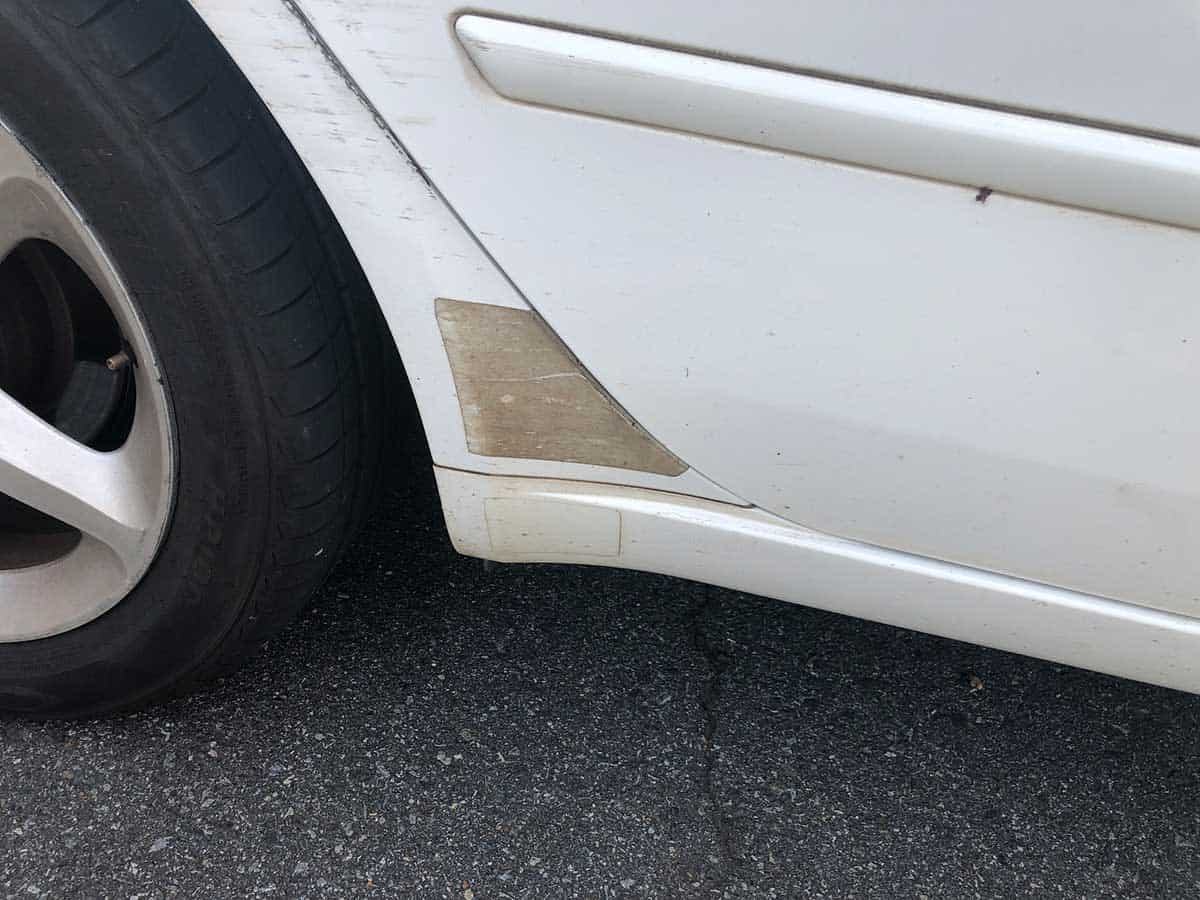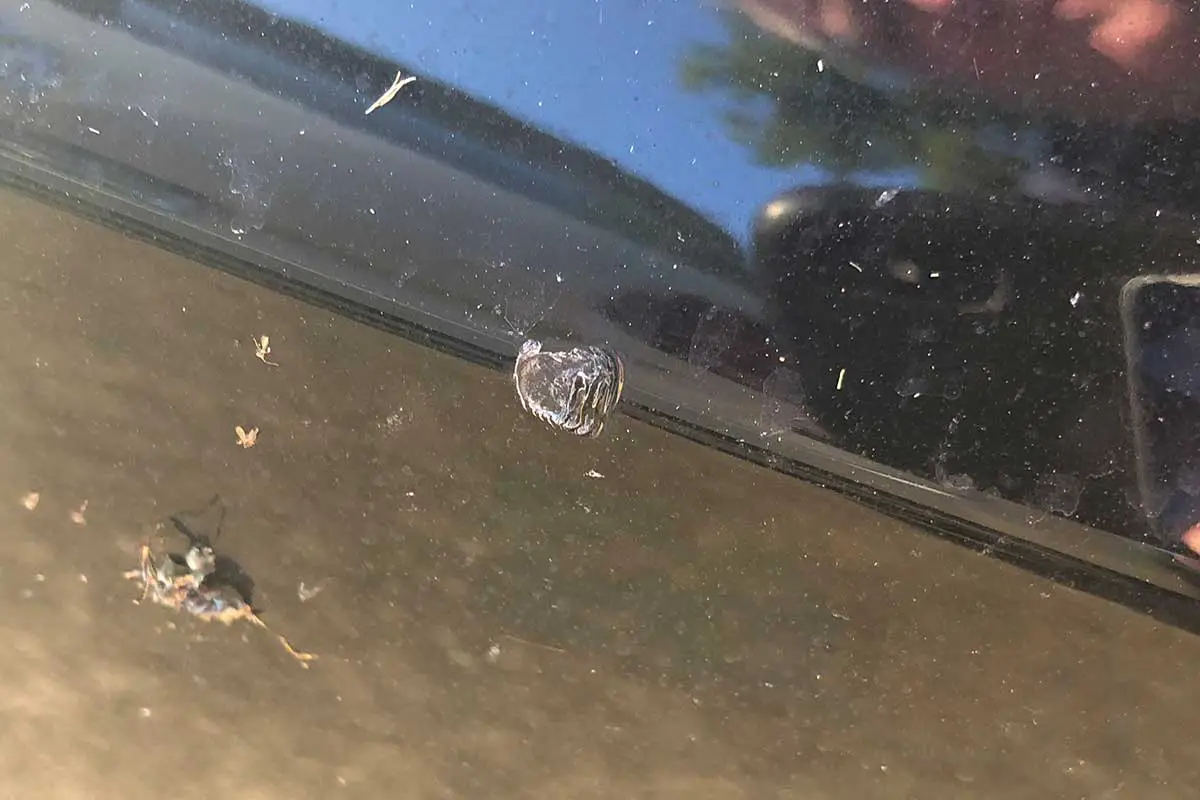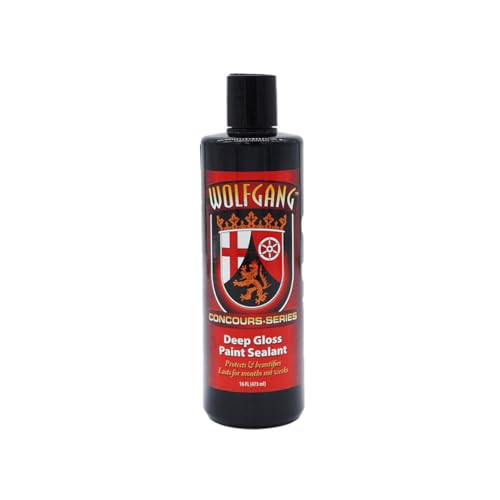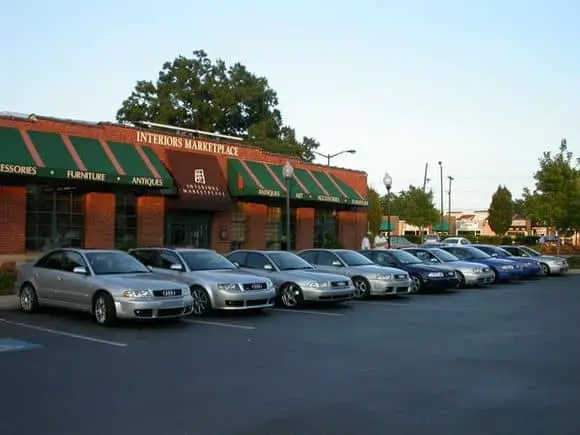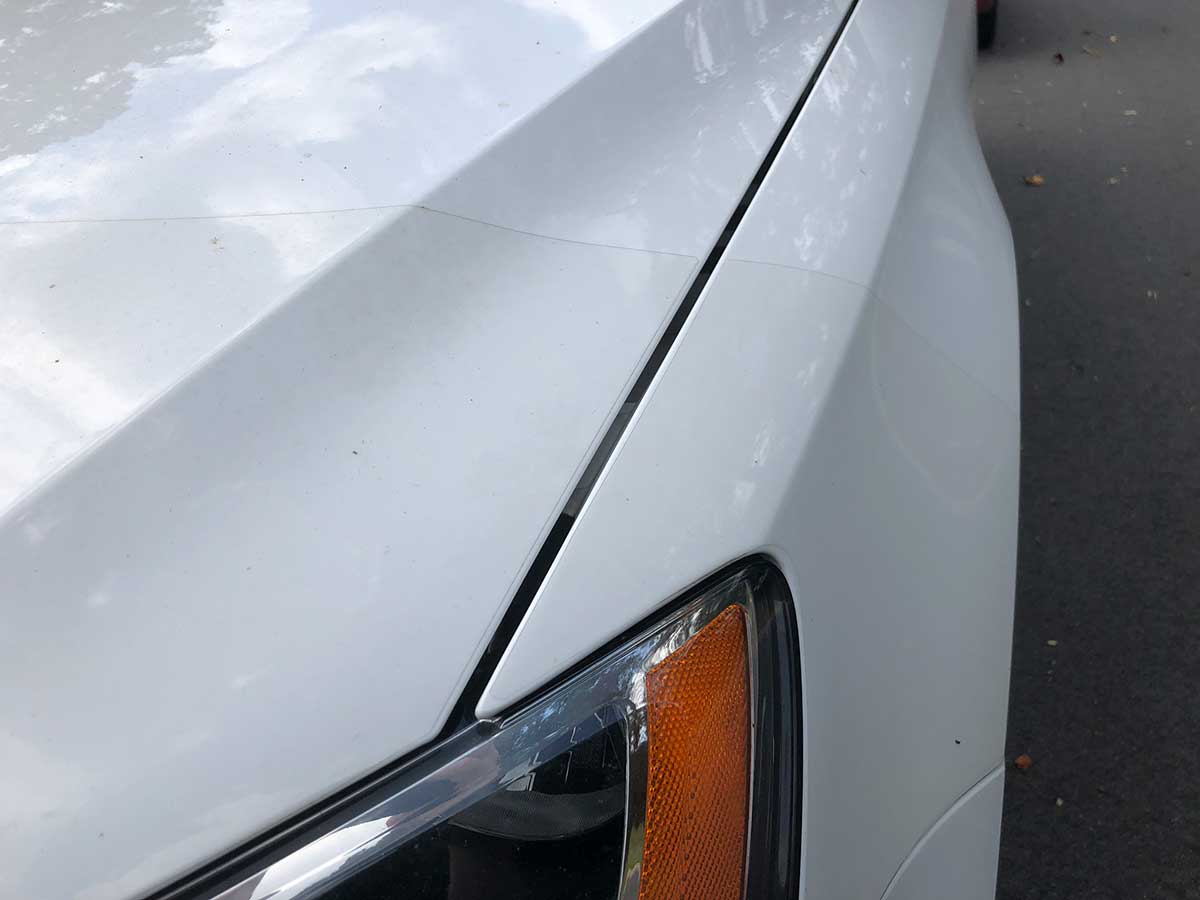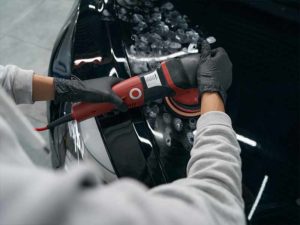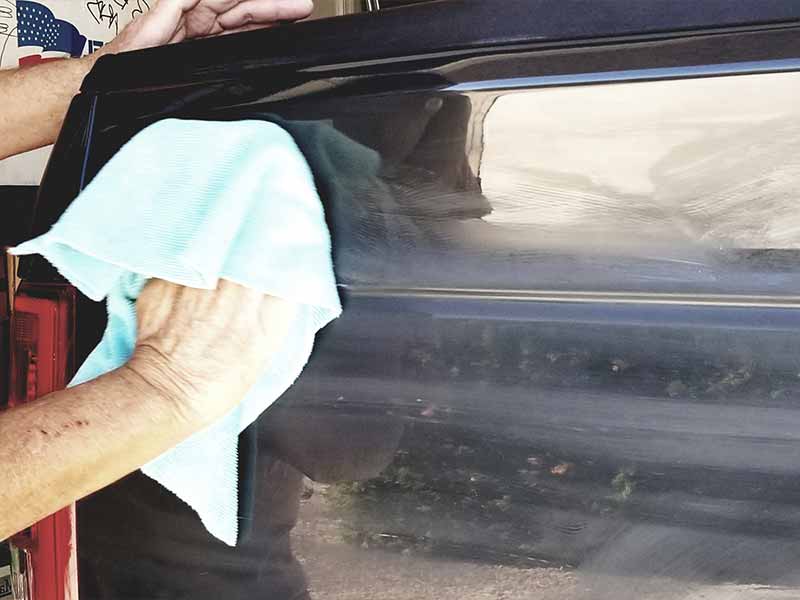Table of Contents
- Paint Protection Film Advantages
- Paint Protection Film Disadvantages
- Situations ideal for paint protection film
- Paint Protection Film Cost
- Tips if considering getting clear bra for your vehicle
- Caring for paint protection film
- Plan on having your PPF replaced eventually
- Alternatives to clear bra protection
- DIY Paint Protection Film
- Save HUGE and Wrap It Yourself - DIY Wrap Kit
- Paint Protection Film is commonly installed on new factory vehicles
- My experience with PPF
- More experience with PPF on my sons car
- Helpful Links
- Conclusion
Paint protection film (PPF for short) is an interesting product. I’ve ultimately come to the conclusion that it isn’t a good choice except in certain circumstances. It’s an amazing product though and it’s very capable but it has some flaws from my experience. I’ll share my first-hand experiences and results of my research trying to answer the important questions.
Originally developed for the military by 3M, it was used to protect the leading edge of helicopter blades from getting damaged so quickly from debris and shrapnel. 3M later made alterations to commercialize it for use in the automotive industry in addition to several others.
Most people apply it to portions of their front bumper cover, the front portion of their hood, headlights, and mirror housings. This is much more affordable and makes sense given that they are the most likely areas to be damaged by flying rocks and debris.
The film is very similar to vinyl bumper sticker material but it’s much thicker and able to withstand serious punishment while being essentially perfectly clear and almost completely unnoticeable. It isn’t vinyl but a thermoplastic urethane. It even has some self-healing properties. It really is an amazing product.
Because of how effective it is, it has become hugely popular for protecting car and truck paint, and for good reason. Some people even go to the extreme of wrapping their entire vehicle. Covering every inch of the painted surface. This is not inexpensive to do though.
Paint Protection Film Advantages
- Does a miraculous job of protecting from rock chips
- Is nearly invisible
- Requires no real extra maintenance
- Has self-healing properties
Paint Protection Film Disadvantages
- Installation cost is high
- Tends to yellow over time (Some manufacturers claim to have resolved this)
- Self-healing abilities are sometimes oversold – light scratches will self-heal but anything much bigger will not
- If damaged from debris, the entire damaged section will need to be replaced
- Can cause damage to paint if left on too long
- Doesn’t last forever – Needs to be replaced between 5 and 10 years depending on manufacturer and abuse
- Usually will look less shiny than unwrapped sections
- Needs a coating to improve water beading
Situations ideal for paint protection film
I honestly don’t think clear bra is all bad. I believe on dark-colored cars it is a better option if you’re a frequent highway driver or any other situation that will expose you to an unusually high number of rock chips.
Even light-colored cars in this situation would benefit. You may experience some yellowing but this can be made less obvious by having entire panels wrapped instead of a portion of a panel. This will also eliminate dirt and road grime from being seen on any prominently exposed seams as they will be hidden from view.
Keep in mind however that most manufacturers of paint protection film suggest it be replaced around the 5-year mark.
Paint Protection Film Cost
If you plan on having your entire vehicle wrapped you can expect to pay several thousand dollars at least. If you have a large truck or SUV you can expect to pay significantly more.
If you’re just having the front end wrapped it’ll be a lot more manageable. It still won’t be cheap though. You can expect a partial front end application to begin to approach a thousand dollars.
Tips if considering getting clear bra for your vehicle
Be sure your installer wraps the film around the edges of all panels. Precut products designed to fit a particular car typically don’t wrap around the edges of panels. You can see what I mean in the detailed pics of the Jetta. The film is cut to fit but comes right to the edge and leaves a small gap. Dirt and road grime can easily collect here. Find an installer that hand-cuts the PPF.
Note that some installers will reuse to wrap film around panel edges claiming that the film will not adhere properly. This is true mostly when the backside of the panel edge isn’t prepped properly and is a bit dirty. I’m sure on some vehicles the back edge of the panel may not be ideal for adhering film. That said, on all of the high-end vehicle wraps I’ve seen they wouldn’t dare have exposed film edges.
Ask if there are any vehicles that have had film installed for an extended period of time you can see. Look for peeling on edges. This is what will separate a good installer from a great installer. If edges have been wrapped over, the seams will be hidden. I talented installer will be able to get the film to stick well in this situation.
Caring for paint protection film
Most car bra films don’t really have any special care requirements. Some film manufacturers sell products to care for the film but not all do. When I purchased a clear bra for my car I was told that I could basically just wax it like I would the paint on the car.
I get the impression that the products some manufacturers sell to care for paint protection film are just wax or sealant that isn’t much different than what you would normally apply to your car. I can’t confirm this so be sure and follow all manufacturer suggestions to be safe.
Plan on having your PPF replaced eventually
PPF doesn’t last forever. Best case scenario is ten years according to my research. Typical lifespan seems like 5-7 years it’s more realistic also based on my research.
Here’s a pic I took of PPF on an older Hyundai I saw in a parking lot while in the middle of working on this article. I don’t know the age of the car but the film placed in front of the rear wheel looks awful. Of course this is an area that is going to receive a lot of abuse. I would guess this car was close to the 20 year old range. It isn’t surprising given the location and age that it looks this bad.
Alternatives to clear bra protection
Unfortunately, the only real alternative to PPF is dealing with rock chips. You can get your car ceramic coated which will help prevent fine scratches but it will not do anything against a stone chip.
The route I’ve chosen to go is to deal with rock chips as they happen. This isn’t the best choice for everyone. The good news is that it has become easier to deal with rock chips but it still isn’t simple. My reasons are cost and aesthetics. I also plan to keep my current car for an extended period of time so I know I’d have to deal with replacing the clear bra at some point.
A good friend of mine decided that the route he wanted to go with his Porsche 911 Turbo was to just wait until the damage was bad enough that he felt getting the front end repainted was worthwhile. This is not inexpensive but probably not much more than the paint protection film itself.
A concern I have with this route is getting a proper job done. My experience with having had cars repainted is that the quality won’t be nearly as good as the factory paint. No one will care for my car as well as I would.
If you consider this option, plan on doing a lot of research to find a good paint shop. Ask around at local car meets. Hopefully, you’ll even be able to see first hand the quality of the paint job at the car meet.
Wolfgang Deep Gloss Paint Sealant
Cquartz UK 3.0 Ceramic Coating
Adam's UV Ceramic Paint Coating
DIY Paint Protection Film
When I was in college I worked at a couple of banner and sign shops. We had a vinyl cutter that would cut out text and graphics that we would apply to the signs and banners. We used a spray bottle with a mixture of water and a little soap to keep the vinyl from sticking until we had it placed exactly. This is the same way that paint protection film is applied. Applying graphics was a pretty simple task at my sign job. The only additional complication for a car are surfaces that are very curved. To deal with more extreme bends and curves a heat gun is used to soften the film so it can be stretched and fit.
If you’re up for the job of doing your own PPF install I recommend reading the 3M Scotchgard Application Guide for Professional PPF Applicators.
Installation is the bulk of the expense of paint protection film. Doing it yourself will save you a huge amount. Unless you’re attempting to install particularly large sections it is reasonable to give it a shot yourself. The paint protection film itself is very reasonably priced. All you need in addition to the film is a vinyl application squeegee, razor blade, and a spray bottle with water and a little baby shampoo soap. You’ll only need a heat gun if you have difficult bends and curves you need to wrap.
You can likely find precut kits for your car or truck that’ll be easier to install but you will have a little fine line around every edge. Precut kits are better suited to darker colored cars and trucks. I would prefer having the film wrapped over the edges of all panels personally, but that’ll be a more challenging install. If you’re not concerned about the fine lines, the precut kits are the way to go.
Prepping the surface to apply the wrap to is going to be important. It needs to be completely cleaned and not have any wax or contaminants on it. You will probably want to clean the surface with a mixture of isopropyl alcohol and water. You’ll also want to find a garage to work in if you don’t have one available. This will remove wind from the equation and also help protect from flying debris that could stick to the freshly cleaned paint surface or the adhesive backing of the paint protection film.
Spend a little time on YouTube watching how to install a clear bra and see if it’s something you think you’d be willing to try installing yourself. After watching a few videos you should get a feel as to whether it is within your ability to tackle. If you have larger sections, like a hood, that you want to wrap you may need to find a friend to help you out.
Save HUGE and Wrap It Yourself - DIY Wrap Kit
Paint Protection Film is commonly installed on new factory vehicles
Many manufacturers ship their cars from the factory with paint protection film installed in certain areas to reduce potential damage. Porsche is known for installing it in front of the rear wheel wells that flare out in the 911 where chips are likely to occur.
It’s possible that the paint protection film used by Porsche and other manufacturers is different and better than that used on my Audi S4 and the Jetta. It’s also possible it’s the exact same. I don’t know.
Porsche isn’t the only manufacturer to install paint protection film at the factory on new vehicles. Almost every manufacturer installs it in some way. It’s very common to find on bodywork just in front of the rear wheels. Volkswagen and many other manufacturers will install it behind a door handle to protect from fingernail scratches.
I’m sure that PPF will hold up very well for people over the 5 years of a manufacturer’s warranty. It will probably still yellow over time and may even damage the clear coat if left on long enough. It isn’t going to last for the lifetime of the vehicle. It has a lifespan of only 5 years on a car that regularly spends extended time outside in the direct sun and elements.
My experience with PPF
I personally had PPF installed on the front portion of my hood and the front bumper cover as well as my mirror housings. I’m sure it protected me from many a rock chip but all was not perfect. I had a few gripes with it that I’d like to share.
I had the clear bra applied to my silver 2001 Audi S4. It was reasonably unnoticeable with the exception of a fine line across my hood where the paint protection film stopped.
I wasn’t too concerned about the fine line. The only way to eliminate it would be to wrap the entire hood and I didn’t have the funds to make that happen. This was a reasonable compromise in my opinion.
Over time this faint fine line became more prominent as dirt and road grime began to collect on the adhesive edge. Since my car was a very light color it stood out more than it would have on a dark-colored car or truck.
Also, as time progressed, the clear bra began to yellow. Again, having a light-colored car made this more noticeable when it likely wouldn’t have been able to be detected on a much darker color vehicle.
Later I had an issue where a rock had hit the clear bra and damaged it a bit. I was lucky that it had done so on a very small piece. The installers had put a couple of small patches of paint protection film on the front corner of each quarter panel and this was the piece that had gotten damaged.
Instead of leaving the damaged clear bra, which looked similar to a rock chip, I decided to peel it off. Turns out that the adhesive seemed to have eaten into the clear coat and the clear began to pull away as I peeled it off. I was livid. The clear bra can damage paint if left on too long but that wasn’t the case here. It had only been on about 3 years at the time.
In fairness, I’m not a trained installer of PPF and the failure may be my fault due to not removing it properly. That said, I did a significant amount of research to determine the proper method of removal when writing this article. What I found is that heat helps to remove the film but isn’t required. I also found on detailer forums that paint damage is extremely rare but can happen, especially if the paint surface isn’t prepared properly before application. Heat guns and steamers were the suggested tools to aid in removal but are simply for making the job easier and quicker.
Another area of some concern was applying paint protection film to freshly painted panels. Quality of the paint and paint job could certainly be a factor as well. The best practice here is to find a good painter and allow the paint to cure for several days before applying the film. Ask your bodywork pro how long they suggest waiting. This wasn’t the cause of my clear coat peeling however since it was never repainted prior to application.
This problem may have been due to the installer making a mistake or unique to the brand of paint protection film that was applied to my car. I can’t be sure. At this point I had all of the film removed and the entire front end of the car repainted.
I obviously had a bad experience personally but I don’t think you should judge whether paint protection film is right or wrong for you and your car or truck solely based on my personal experience.
More experience with PPF on my sons car
Recently my son got a used white Volkswagen Jetta. It is in great condition and happened to have a clear bra already installed on it. It was installed similar to how it was installed on my S4. Front bumper cover, the front portion of the hood, and rearview mirror housings.
My thinking had been that in the 15 or so years that have passed since I had my clear bra installed and his that some of these problems had been sorted out. Mine was installed in the early 2000s and his probably when the car was new or just after which would be around 2013-2015. Turns out that isn’t the case.
Being a solid white car, it really shows the yellowing that has occurred in the years it has been on the car. Honestly, it doesn’t jump out at you. But it is quite noticeable. Less so in the picture, I’ve included but you can still see clearly what I’m referring to.
Another issue I noticed is at a spot where a rock hit the film. It struck right at the leading edge of the film on the hood. It appears that it worked and kept the rock from chipping the paint but I noticed another problem. It appears not just the clear but the paint layer as well is lifting where the protection film was applied.
It hasn’t lifted much but there is a crack in the finish right where the edge of the film was. I don’t see how the rock that tore away some of the clear bra material could have done this unless the adhesive on the film had not caused some damage first.
We don’t know who installed the film or who the manufacturer is but it doesn’t fill me with confidence that any improvements have been made in all these years.
Helpful Links
Conclusion
To wrap up, (pun intended) paint protection film is an amazing product that works really well but has some serious downsides. For me, the biggest downside is the expense to have it installed combined with the fact that it will eventually need to be replaced at approximately 5 years.
Also, if a rock tears the film that entire piece of film will need to be replaced. If that piece of the film happens to be on your hood then you’re looking at removal and re-wrap of a very large panel which won’t be cheap.
My brother-in-law does very well for himself. He tends to buy cars, modify them, and then sell them at about 2-3 per year. Not too long ago he took me for a ride in a heavily modified Mercedes Benz AMG sedan. Wicked fast and beautiful car. He had it completely wrapped in paint protection film. A rock had kicked up and torn the film on the front passenger door. The finish was not harmed so the PPF worked, but at the expense of having to re-wrap the entire passenger door.
I suggest considering doing a DIY PPF install if you’re up to the challenge. You’ll save a tremendous amount of money. The majority of the cost of a clear bra install is labor and not the product.
The other option I suggest is just touching up rock chips as you go and repainting if or when it’s needed.
You may be someone that needs more protection due to your commute or other factors. If this is you then PPF may be the best solution for you. Good luck!

